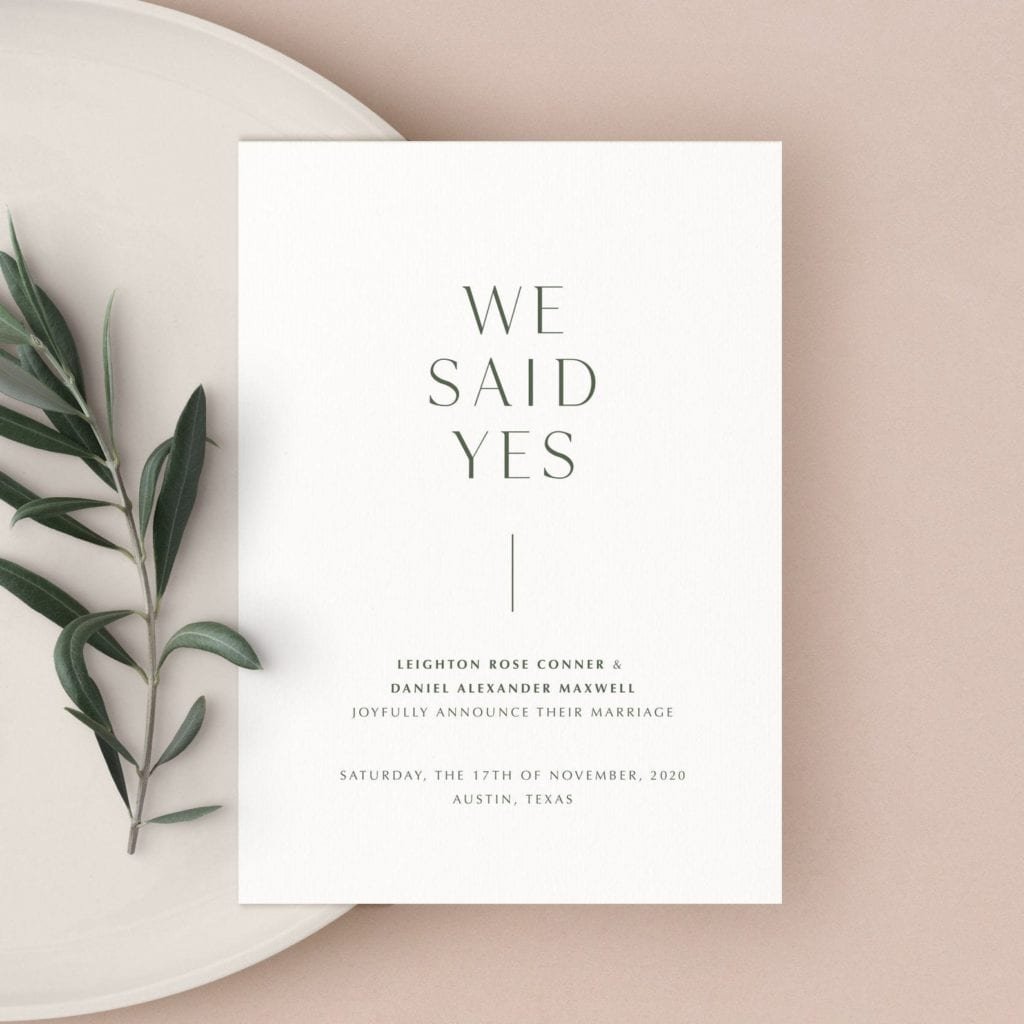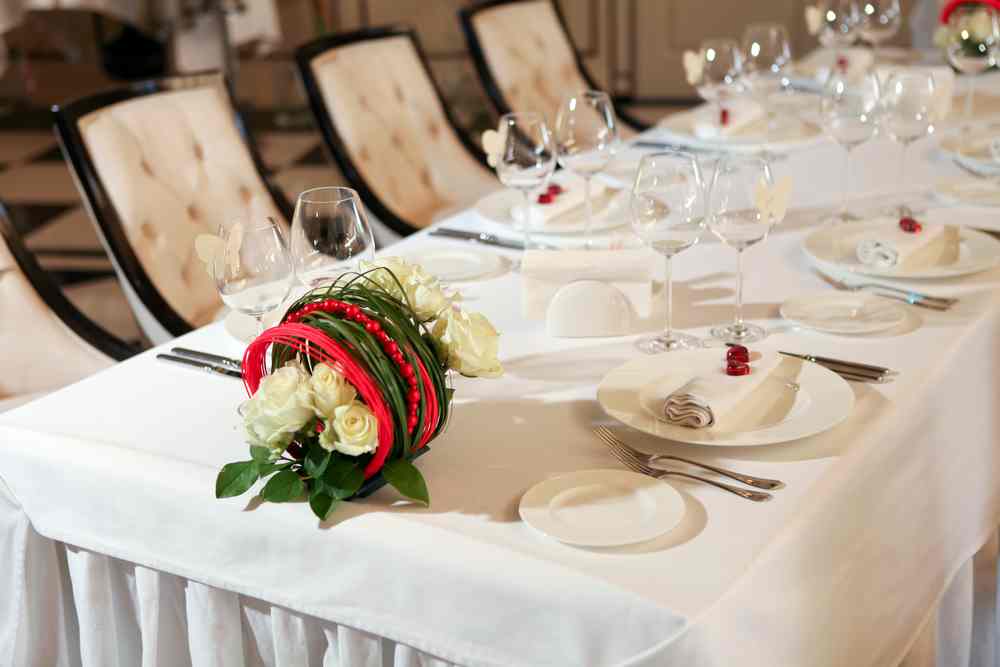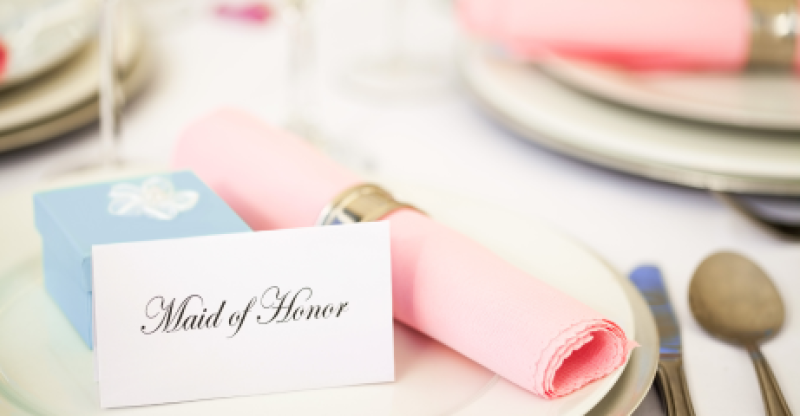Mastering Place Card Etiquette for your Next Event
Hosting a successful event relies on attention to detail, and one crucial aspect that can elevate your hosting game is mastering place card etiquette. Proper place card usage and seating arrangement guidelines will ensure a sophisticated and seamless hosting experience for you and your guests. In this section, we will delve into the importance of place card etiquette, explore different seating assignments, provide helpful tips, and discuss the significance of place cards in formal events.
Key Takeaways:
- Proper place card usage and seating arrangement guidelines are essential for hosting a successful event.
- Place cards are used to assign guests to specific seats, while escort cards guide guests to tables.
- Address guests by their full first name and be consistent with titles and addressing couples or families.
- Indicate meal choices on place cards using colored stickers or symbols.
- Design and display place cards to align with the event’s overall design and venue’s environment.
Understanding the Different Seating Assignments
Before diving into the intricacies of place card etiquette, it is important to understand the different seating assignments and their purpose. There are various options available to organizers when it comes to seating arrangements, including place cards, escort cards, and seating charts. Each option serves a unique role in ensuring a smooth and organized event.
Place cards are commonly used to assign guests to specific seats at the table. These cards are placed at each guest’s designated seat, indicating their assigned place. On the other hand, escort cards are used to guide guests to their designated tables. These cards are typically displayed at the entrance of the event, allowing guests to find their table and seat based on the information provided on the card.
Place Card Protocol
When using place cards, it is important to adhere to certain protocols to maintain a sense of formality and respect. When addressing guests on the escort cards, it is polite to use their full first name. Additionally, it is crucial to be consistent in titles and addressing couples or families. This ensures clarity and avoids any confusion among guests when they arrive at the event.
Place card placement is also essential. The cards should be strategically positioned on the table, indicating each guest’s assigned seat. It is advisable to place the cards on the right-hand side of the table, slightly above the outermost edge of the place setting. This placement allows guests to easily locate their seat without obstructing their view or creating a cluttered table setting.
Place Card Essentials
When designing place cards, it is important to consider the overall style and theme of the event. The design should align with the event’s aesthetic, maintaining a cohesive look. Additionally, it is crucial to consider the venue’s environment. For example, if the event is held outdoors, it is advisable to choose place cards that are sturdy and can withstand potential wind or weather conditions.
| Seating Assignments | Suitable for |
|---|---|
| Place Cards | Assigning guests to specific seats at the table |
| Escort Cards | Guiding guests to their designated tables |
| Seating Charts | Providing an overview of the seating arrangement |
Creating a master list is an essential element of using place cards effectively. This list should include all seating assignments and meal choices for the event planner and catering staff. Having a clear and legible display of the seating arrangements ensures a smooth flow of the event and allows the staff to provide excellent service to the guests.
Overall, understanding the different seating assignments and their purpose is crucial in mastering place card etiquette. By carefully considering the options available and following proper protocols, you can create a sophisticated and organized event that leaves a lasting impression on your guests.
Using Escort Cards and Place Cards
When it comes to organizing the seating arrangements for your event, escort cards and place cards play a crucial role in guiding guests to their designated seats. Utilizing these tools not only adds a touch of elegance to your event but also ensures a smooth and organized dining experience for your guests.
Escort cards are typically used to direct guests to their assigned tables, while place cards specify their specific seating. To ensure a seamless flow, it is important to display the escort cards near the entrance or reception area, while place cards are placed at each individual seat. This way, guests can easily locate their tables and find their designated seats without confusion.
Creating a visually appealing table display is essential to leave a lasting impression on your guests. Consider coordinating the design of the escort cards and place cards with the overall theme and color scheme of your event. You can choose from a variety of options, such as elegant calligraphy, beautiful cardstock, or even personalized touches like mini picture frames or unique place card holders.
Table 1: Escort Card Display
| Table Number | Guest Names |
|---|---|
| 1 | John Smith |
| 2 | Sarah Johnson |
| 3 | Michael Davis |
Table 2: Place Card Display
| Seat Number | Guest Names |
|---|---|
| 1 | John Smith |
| 2 | Sarah Johnson |
| 3 | Michael Davis |
To ensure a clear and organized display, it is recommended to create a master list of seating assignments and meal choices. You can easily refer to this list when arranging the escort cards and place cards, making sure everything aligns perfectly. This master list is also valuable for the event planner and catering staff, allowing them to execute the seating arrangements and meal service smoothly and seamlessly.
By utilizing escort cards and place cards effectively, you not only create a sense of order and elegance at your event but also ensure that your guests feel welcomed and comfortable throughout the evening. Make the most of these essential tools to master place card etiquette and provide a memorable dining experience for everyone in attendance.
Addressing Guests and Couples
Addressing your guests and couples correctly on the place cards sets a tone of formality and shows attention to detail. When designing and writing the place cards, it is important to use the guest’s full first name to convey respect and make them feel welcomed. In addition, maintaining consistency in titles is crucial to avoid confusion and uphold proper etiquette.
For couples, it is customary to address them using their shared last name. However, if they have different last names or are unmarried, it is best to address them individually. This shows consideration for their preferences and avoids assumptions. It is also important to be mindful of any cultural or religious practices that may influence the addressing of guests.
Below is an example of how to address guests and couples on place cards:
| Guest | Addressing |
|---|---|
| Mr. John Smith | Mr. John Smith |
| Mrs. Sarah Johnson | Mrs. Sarah Johnson |
| Dr. Emily Davis | Dr. Emily Davis |
| Ms. Jessica Thompson | Ms. Jessica Thompson |
| Mr. David Brown and Mrs. Emma Brown | Mr. David Brown and Mrs. Emma Brown |
| Ms. Sophia Lee and Mr. Matthew Johnson | Ms. Sophia Lee and Mr. Matthew Johnson |
Summary:
Properly addressing your guests and couples on place cards is essential to create a formal and well-organized event. Using the guest’s full first name and maintaining consistency in titles demonstrate respect and attention to detail. When addressing couples, consider their preferences and use their shared last name, or address them individually if they have different last names or are unmarried. By taking these steps, your guests will feel honored and valued, contributing to a memorable dining experience.
Indicating Meal Choices
Indicating meal choices on place cards ensures a smooth dining experience for your guests and helps avoid any confusion or delays in service. By clearly communicating each guest’s meal selection to the catering staff, you can ensure that everyone receives the correct dish without any mix-ups.
So how do you go about indicating meal choices on your place cards?
One method is to use colored stickers or symbols that correspond to each meal option. For example, you could use a green sticker for vegetarian dishes, a blue sticker for seafood, and a red sticker for meat. This allows the serving staff to easily identify each guest’s preference and serve them the appropriate meal without interrupting the flow of the event.
Another option is to include a small icon or abbreviation next to each guest’s name on the place card. This can be as simple as a “V” for vegetarian, “F” for fish, or “M” for meat. This method is particularly useful if you have limited space on the place card.
Remember to communicate the meaning of the symbols or abbreviations to the catering staff beforehand, so they are aware of the meal choices and can provide efficient service.
| Meal Choice | Color Sticker/Symbol | Icon/Abbreviation |
|---|---|---|
| Vegetarian | Green sticker | V |
| Seafood | Blue sticker | F |
| Meat | Red sticker | M |
Using these methods to indicate meal choices on your place cards not only streamlines the dining process but also adds a touch of elegance to your event. Guests will appreciate the attention to detail and the effort taken to ensure that their dining preferences are catered to.
Designing and Displaying Place Cards
The design and display of place cards can enhance the visual appeal of your event and contribute to the overall ambiance. Proper place card usage is essential in creating an organized and sophisticated seating arrangement for formal events. When designing your place cards, consider the style and theme of your event. Choose fonts, colors, and materials that complement the overall decor. For a formal event, elegant calligraphy on thick cardstock or engraved place cards can add a touch of luxury.
When displaying place cards, it is important to consider the venue’s environment. Place cards can be arranged in various ways, such as on a table near the entrance, or directly on the dining tables. Use holders or stands to keep the place cards upright and easily visible to guests. Alternatively, you can get creative and incorporate the place cards into the venue’s decor. For example, you can hang them on a beautifully decorated board or attach them to small floral arrangements at each table.
To create an organized seating arrangement, use a seating chart or a diagram to guide guests to their designated seats. This can be displayed near the entrance or at each table. The seating chart should clearly indicate the table number and the names of the guests assigned to each table. It is helpful to arrange the tables in a logical order, such as alphabetically by last name or by relationship to the hosts. This will make it easier for guests to find their assigned seats and minimize confusion.
Table 1: Main Guests
| Seat Number | Guest Name |
|---|---|
| 1 | John Smith |
| 2 | Jane Johnson |
| 3 | David Roberts |
Remember, place cards are not just functional, they also serve as a thoughtful gesture to make your guests feel special and welcomed. Taking the time to design and display place cards in an aesthetically pleasing way shows attention to detail and adds a personal touch to your event. With proper place card usage and a well-organized seating arrangement, you can ensure a memorable and enjoyable experience for both you and your guests.
Creating a Master List
Creating a master list of seating assignments and meal choices provides a comprehensive guide for your event planner and catering staff. This list ensures that all details are organized and readily available, making the event planning process smoother and more efficient. By including the seating assignments, you can easily reference and update the seating arrangement as needed. Additionally, including meal choices allows the catering staff to prepare and serve the correct meals to each guest.
When creating the master list, it is important to include key information such as the guest’s full name, assigned seat number or table name, and their chosen meal option. Organize the list in a logical manner, such as alphabetically by last name or table number, to make it easy to navigate and reference. Utilizing a digital spreadsheet or seating arrangement software can further streamline the process and allow for easy updates and modifications.
Seating Assignments
The first section of the master list should focus on seating assignments. If you are using place cards, include the guest’s name and assigned seat number or table name. If you are utilizing escort cards, note the table number or name where the guest is seated. This ensures a smooth transition from the escort cards to the actual seating arrangement at the event.
Meal Choices
Another important component of the master list is meal choices. If your event offers different meal options, it is essential to include each guest’s chosen meal on the list. This way, the catering staff can easily identify and serve the correct meal to each guest. Include clear indications of the different meal options, such as using different colored stickers or symbols next to the guest’s name.
| Guest Name | Seat Number | Meal Choice |
|---|---|---|
| John Smith | Table 3 | Chicken |
| Sarah Johnson | Table 1 | Vegetarian |
| Michael Thompson | Table 2 | Fish |
By having a master list of seating assignments and meal choices, you can ensure that your event runs smoothly and that guests have an enjoyable experience. Providing this comprehensive guide to your event planner and catering staff will help them execute the seating arrangements and food service with ease and efficiency.
Assigned Seating for Larger Events
When hosting larger events, it is often recommended to use assigned seating to provide structure and ensure everyone has a designated seat. Assigning seats helps create a more organized and efficient event, allowing guests to feel more comfortable and ensuring a smooth flow of the evening.
Using a combination of place cards, escort cards, and seating charts can help guide guests to their assigned seats. Place cards are typically placed directly on the table, indicating the guest’s specific seat. Escort cards, on the other hand, are placed at the entrance of the venue and direct guests to their designated table. This combination allows for easy navigation and ensures that guests are seated according to the host’s seating arrangement.
Benefits of Assigned Seating:
- Structure: Assigned seating provides a clear structure, avoiding the chaos of guests trying to find seats on their own.
- Efficiency: By assigning seats in advance, you can plan the seating arrangement strategically to optimize the flow of the event.
- Guest Comfort: Assigned seating ensures that guests are seated with people they know or have common interests with, fostering a more enjoyable experience for everyone.
- Special Considerations: Assigned seating allows you to consider any special dietary or accessibility needs of your guests and accommodate them accordingly.
- Event Coordination: Assigned seating helps the event planner and catering staff execute a seamless service, knowing exactly where each guest should be seated and what meal choices they’ve made.
By implementing assigned seating for larger events, you can enhance the overall guest experience and create a more organized and enjoyable environment. It allows you to carefully plan the seating arrangements, consider guest preferences and needs, and ensure that everyone feels welcome and comfortable throughout the event.
| Benefits | Description |
|---|---|
| Structure | Assigned seating provides a clear structure, avoiding the chaos of guests trying to find seats on their own. |
| Efficiency | By assigning seats in advance, you can plan the seating arrangement strategically to optimize the flow of the event. |
| Guest Comfort | Assigned seating ensures that guests are seated with people they know or have common interests with, fostering a more enjoyable experience for everyone. |
| Special Considerations | Assigned seating allows you to consider any special dietary or accessibility needs of your guests and accommodate them accordingly. |
| Event Coordination | Assigned seating helps the event planner and catering staff execute a seamless service, knowing exactly where each guest should be seated and what meal choices they’ve made. |
Choosing the Right Seating Arrangement Option
The choice of seating arrangement option should align with your goals, guest experience, and financial considerations. When deciding on the best approach for your event, consider factors such as the formality of the occasion, the number of guests, and the desired atmosphere.
If you prefer a more formal and structured setting, assigned seating using place cards might be the ideal choice. This allows you to carefully plan the seating arrangement, taking into account relationships and dynamics among guests. With assigned seating, you have the freedom to create a balanced and harmonious atmosphere, ensuring that everyone feels comfortable and included. A seating chart displayed at the entrance of the venue can guide guests to their assigned seats.
On the other hand, if you prefer a more relaxed and interactive atmosphere, you may opt for open seating arrangements. This allows guests to choose their own seats, mingle freely, and engage in conversations with different individuals throughout the event. However, open seating may require additional planning to ensure adequate space and seating availability.
Pros and Cons of Different Seating Arrangement Options:
| Seating Arrangement Option | Pros | Cons |
|---|---|---|
| Assigned seating with place cards |
|
|
| Open seating |
|
|
Ultimately, the decision of which seating arrangement option to choose rests with you as the host. Consider the overall vibe you want to create and the specific needs of your guests. Remember, the seating arrangement plays a crucial role in shaping the atmosphere of your event, so take the time to carefully consider all factors before making a final decision.
Conclusion
Mastering place card etiquette is a fundamental component of hosting a successful event, ensuring a seamless and enjoyable experience for your guests. Whether you are planning an intimate dinner party or a lavish wedding, understanding proper place card usage and seating arrangement guidelines will elevate the sophistication of your event.
Place cards play a vital role in assigning guests to specific seats at the table, while escort cards guide guests to their designated tables. It is considered polite to use a guest’s full first name on the escort card and maintain consistency in titles when addressing couples or families.
When there are meal choices, it is essential to indicate guests’ selections on the place cards. This can be done using different colored stickers or symbols. Additionally, the design and display of the place cards should complement the overall event style and consider the venue’s environment to create a cohesive and elegant look.
Creating a master list with seating assignments and meal choices is crucial for the event planner and catering staff to ensure a smooth execution. Clear and legible displays of the seating arrangements are essential to avoid any confusion. Assigned seating is often recommended for larger events, such as weddings with more than 50 guests, as it helps create a structured and organized flow.
Ultimately, the choice of seating arrangement option should be based on your preferences, guest comfort, and budget. Taking into account these factors, along with mastering place card etiquette, will contribute to a memorable and enjoyable event for all attendees.
FAQ
Why is mastering place card etiquette important for my event?
Mastering place card etiquette is important to ensure a smooth and pleasant dining experience for your guests. It helps to create an organized seating arrangement and avoids any confusion or discomfort for your guests.
What are the different seating assignments I can use?
The different seating assignments you can use include place cards, escort cards, and seating charts. Place cards are used to assign guests to specific seats at the table, while escort cards guide guests to their designated tables.
How should I address guests on the place cards?
It is polite to use a guest’s full first name on the escort card. It’s also important to be consistent with titles and address couples or families correctly.
How can I indicate meal choices on place cards?
To indicate meal choices, you can use different colored stickers or symbols on the place cards. This helps the catering staff to identify each guest’s meal selection accurately.
How should I design and display the place cards?
The design and display of place cards should fit the event’s overall design and consider the venue’s environment. They should be clearly legible and align with the event’s style and theme.
Should I create a master list for seating assignments?
Yes, it is important to create a master list with seating assignments and meal choices. This helps the event planner and catering staff to have a clear and organized display of the seating arrangements.
Is assigned seating recommended for larger events?
Assigned seating is typically recommended for larger events, especially weddings with more than 50 guests. It helps to ensure a smooth flow of the event and avoids any confusion or seating disputes.
How do I choose the right seating arrangement option?
The seating arrangement option should be chosen based on your preferences, guest comfort, and budget. Consider factors such as the formality of the event and the space available to make an informed decision.






